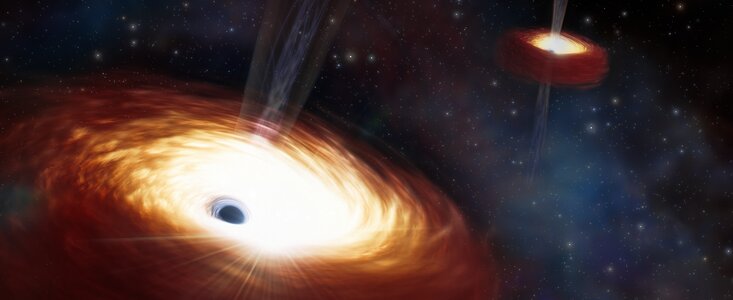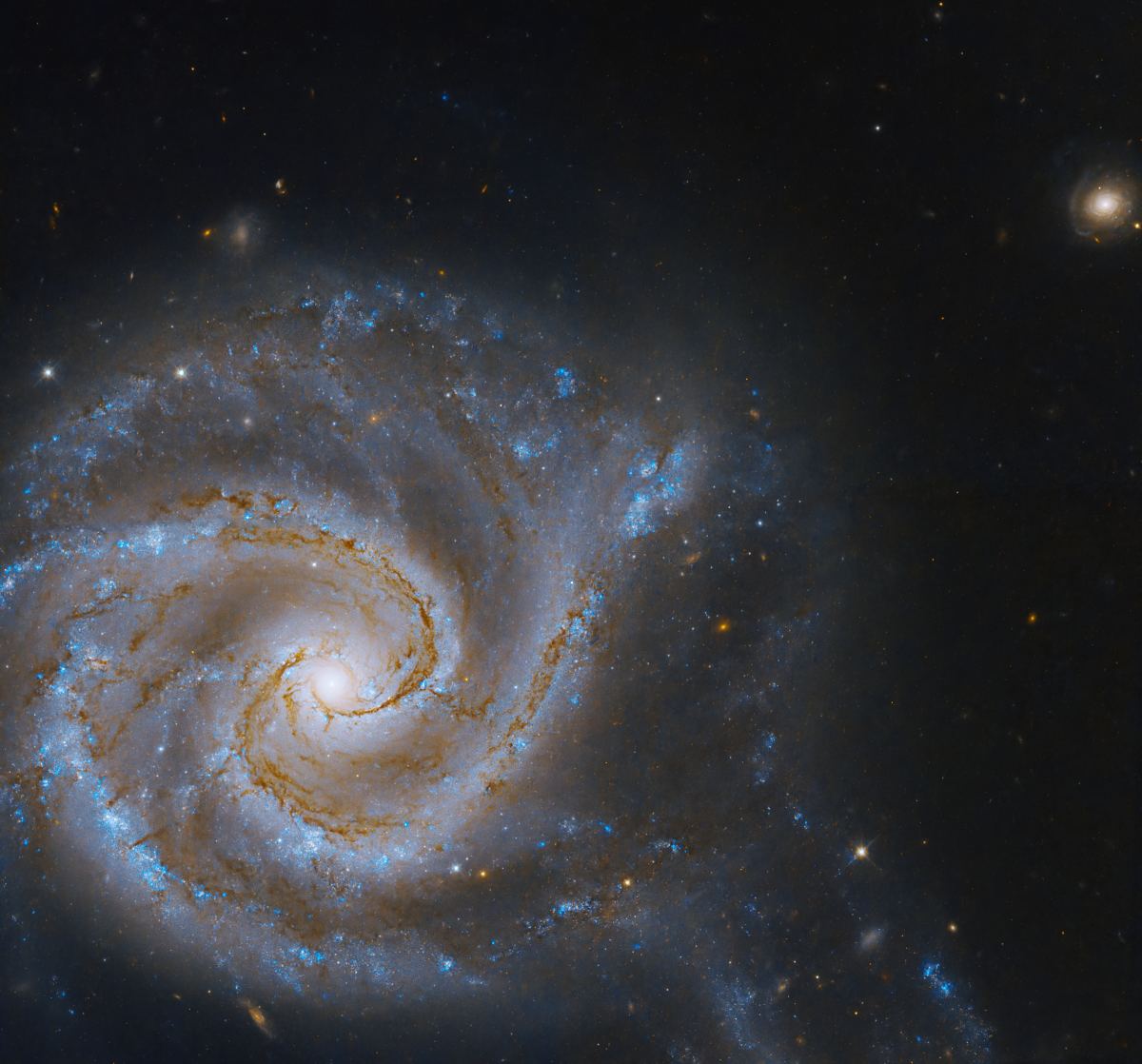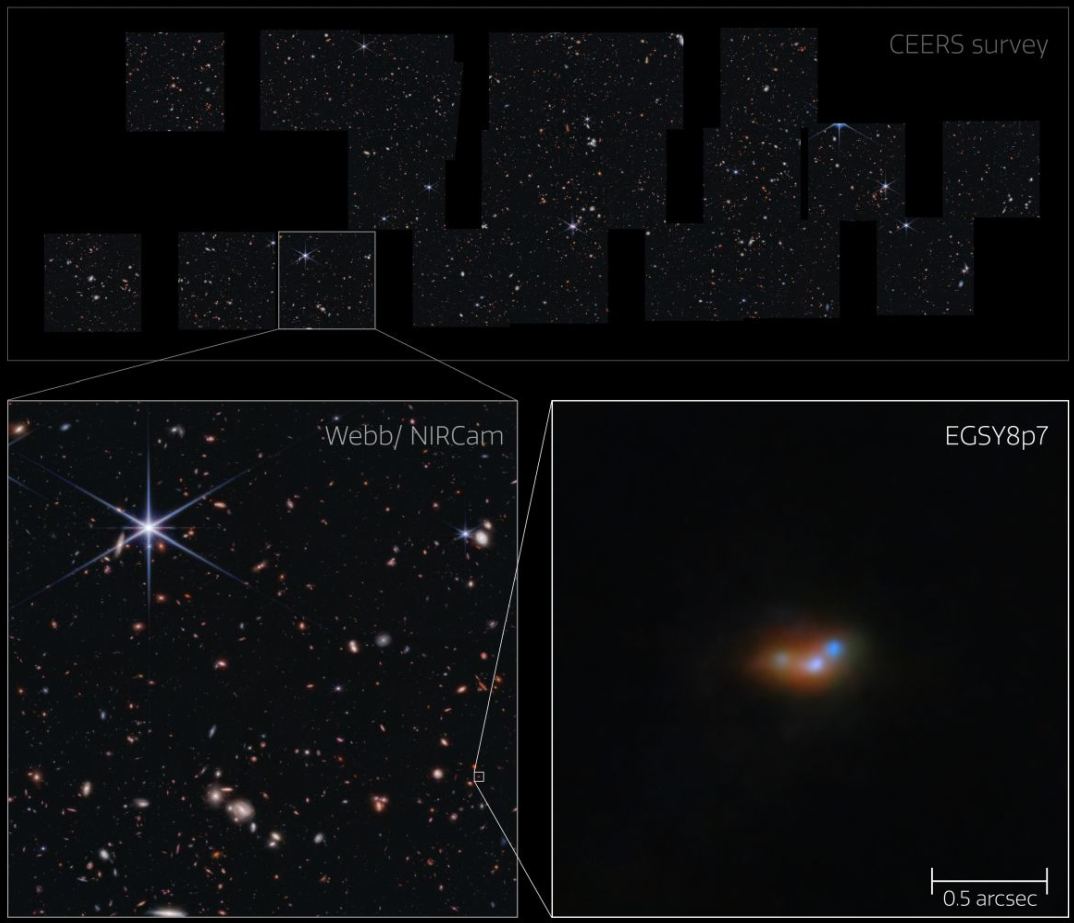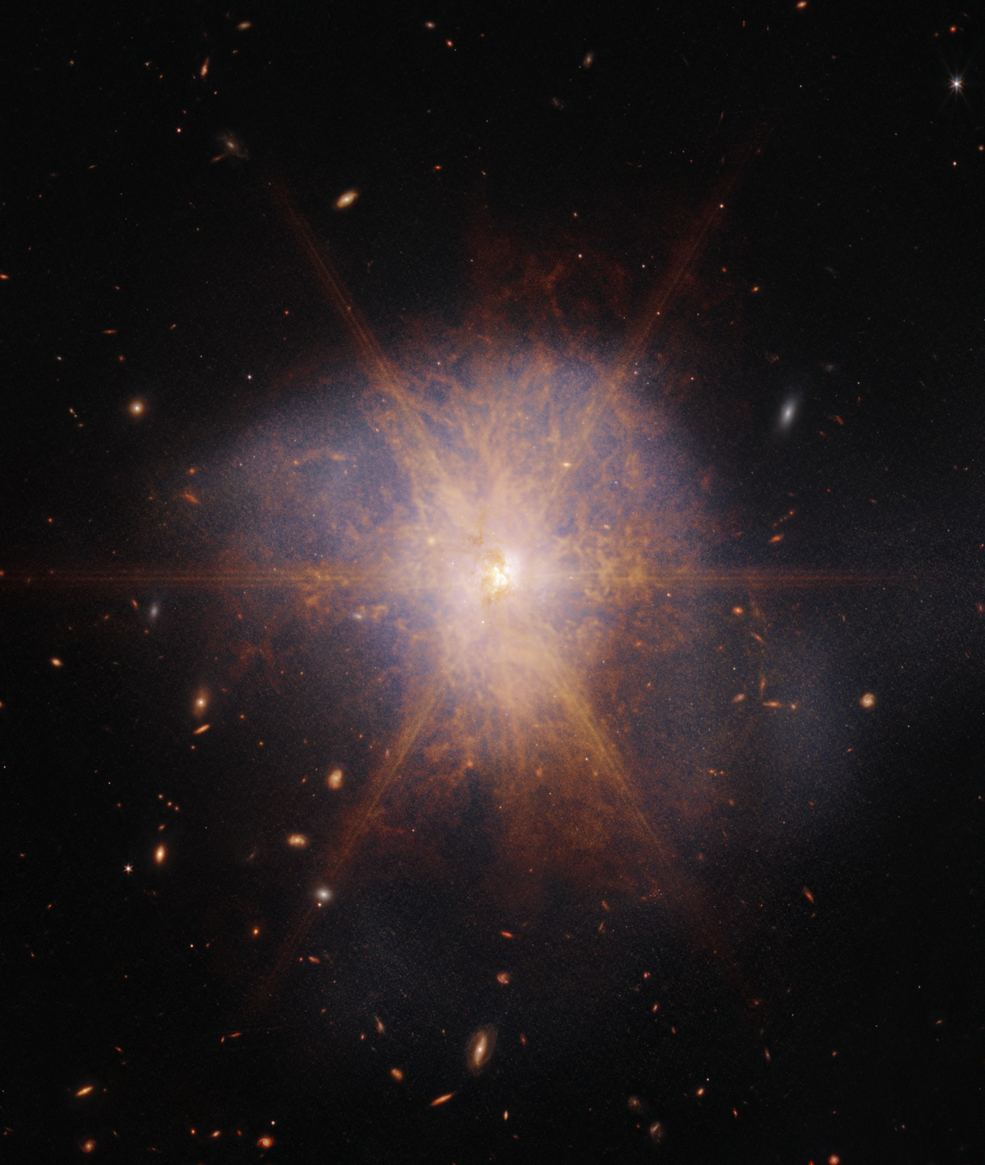Understanding the star formation rate (SFR) in a galaxy is critical to understanding the galaxy itself. Some galaxies are starburst galaxies with extremely high SFRs, some are quenched or quiescent galaxies with very low SFRs, and some are in the middle. Researchers used the JWST to observe a pair of galaxies at Cosmic Noon that are just beginning to merge to see how SFRs vary in different regions of both galaxies.
Continue reading “JWST Reveals Star Formation at Cosmic Noon”JWST Reveals Star Formation at Cosmic Noon










